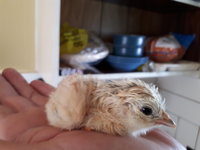The Farmers' Daughter
Bob's biggest Fan
How can you tell that early?I can usually tell gender at 2-3 weeks sometimes sooner on Cockerels
I recently read on a buckeye thread on Facebook that you can feather sex them, but at day 4 or 5. If that's the case, I have 2 females and a male out of my first batch.




